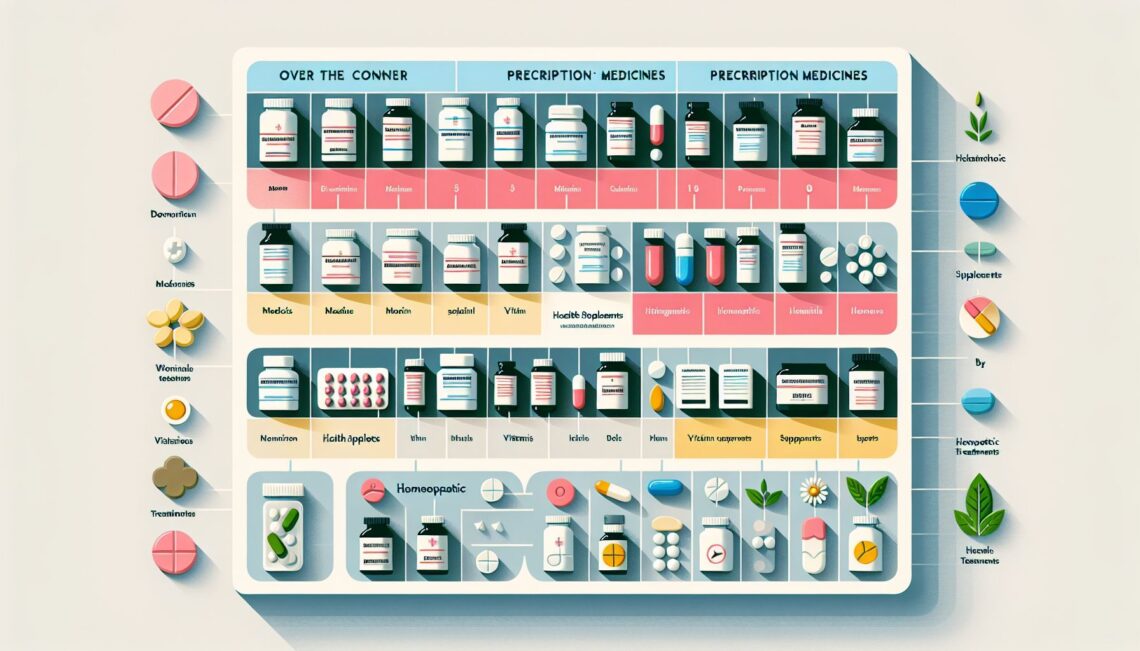
Understanding the Different Types of Medicines
Medicines play a crucial role in treating various health conditions, alleviating symptoms, and improving overall well-being. Pharmacology, the study of drugs, has led to the development of a wide range of medications that target specific ailments. From over-the-counter remedies to prescription drugs, understanding the different types of medicines can empower individuals to make informed decisions about their healthcare. In this article, we will explore the various categories of medicines and their applications.
1. Analgesics
Commonly known as painkillers, analgesics are medications primarily used to relieve pain. They can be further categorized into two types: non-opioid and opioid analgesics. Non-opioid analgesics such as acetaminophen (Tylenol) and nonsteroidal anti-inflammatory drugs (NSAIDs) like ibuprofen (Advil, Motrin) are commonly used for mild to moderate pain. Opioid analgesics, including codeine and morphine, are prescribed for severe pain and should only be used under medical supervision.
2. Antibiotics
Antibiotics are medications that combat bacterial infections. They work by either killing bacteria or inhibiting their growth. From penicillin to more advanced antibiotics like fluoroquinolones, these drugs have revolutionized medical care by treating various bacterial illnesses such as pneumonia, urinary tract infections, and skin infections. It is important to note that antibiotics are ineffective against viral infections, such as the common cold or flu.
3. Antidepressants
Antidepressants are medications commonly prescribed to treat different types of depression, anxiety disorders, and certain chronic pain conditions. These drugs work by altering the levels of chemicals in the brain, such as serotonin and norepinephrine, which can positively impact mood, emotions, and pain perception. Selective serotonin reuptake inhibitors (SSRIs) and serotonin-norepinephrine reuptake inhibitors (SNRIs) are the two most common classes of antidepressants.
4. Antihistamines
Antihistamines are medications used to relieve allergies by blocking the effects of histamine, a substance released during an allergic reaction. They effectively relieve symptoms like sneezing, itching, and runny nose caused by allergies but may cause drowsiness. First-generation antihistamines, such as diphenhydramine, are more likely to cause drowsiness, while newer second-generation antihistamines, like cetirizine or loratadine, have fewer sedative effects.
5. Antacids
Antacids are medications commonly used to relieve symptoms of heartburn or acid reflux by neutralizing excess stomach acid. They provide quick relief and are available over-the-counter. Antacids contain compounds like magnesium hydroxide, calcium carbonate, or sodium bicarbonate, which work by counteracting the acidic pH in the stomach. It is important to note that antacids should not be taken for extended periods without medical supervision, as they can interfere with other medications or worsen certain health conditions.
In conclusion, understanding the different types of medicines allows us to appreciate their varied applications in healthcare. From pain relief to combating infections and addressing mental health conditions, each category of medication serves a specific purpose. While this article provides a brief overview, it is important to consult healthcare professionals and prescriptions for accurate diagnosis, proper usage, and potential side effects. Empowered with this knowledge, we can make informed decisions about our health and well-being.
You May Also Like

Exploring the Different Types of Medicines
February 21, 2024
Different Types of Medicines
January 15, 2024

